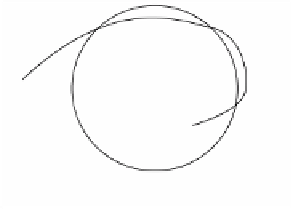Graphics Reference
In-Depth Information
the length of a simple curve like a segment, we must agree on what curvature should
mean in “obvious” cases. It is natural to take the circle as a starting point for curva-
ture. The first assumption we make is that a circle should be said to have constant
curvature. Furthermore, small circles should be considered more “curved” than large
ones. We can capture these aspects of circles by having the curvature of a circle of
radius r be a number proportional to 1/r and nothing will be lost if we normalize
things and define the curvature to
be
1/r. Next, however we finally define curvature
for arbitrary curves, if we apply it to a circle, the definition should agree with the one
we just gave. Before we present a specific general definition of curvature we look at
two possible geometric approaches to getting such a definition that will have the prop-
erties we want.
Let
[
]
Æ
R
2
Fab
:
,
be the parameterization of some curve in the plane. Consider a fixed point F(t
1
) on
the curve.
First geometric definition of curvature:
The idea here is to define the curvature
at the point F(t
1
) to be the reciprocal of the radius of the best “matching” circle to the
curve at that point. To find this circle, let
C
(t
1
,t
2
,t
3
) denote the circle through the points
F(t
1
) and two neighboring points F(t
2
) and F(t
3
). See Figure 9.3. This circle will exist
and be unique as long as the points F(t
i
) are not collinear. We now let
C
be the limit
of these circles as t
2
and t
3
converge to t
1
. One can show that as long as F≤(t
1
) π 0,
then this limit
C
exists. Basically,
C
is determined by its center which is the limit of
the centers of the circles
C
(t
1
,t
2
,t
3
). The circle
C
, called the
osculating circle
for the
curve at F(t
1
), is the best matching circle we are seeking. Its center is called the
center
of curvature
and its radius is called the
radius of curvature
of the curve at F(t
1
).
Second geometric definition of curvature:
Again consider the point F(t
1
) and let
F(t
2
) be a nearby point. The angle between the tangent vectors F¢(t
1
) and F¢(t
2
) can be
used as a measure of how curved the curve is at F(t
1
) when t
2
is close to t
1
. See Figure
9.4. More precisely, define the curvature of the curve at F(t
1
) to be
-
()
¢
()
(
)
Ft Ft
Ft Ft
,
1
2
lim
t
.
(9.4)
()( )
Æ
t
1
2
21
F(t
2
)
F(t
1
)
F(t)
F(t
3
)
Figure 9.3.
Curvature in terms of the best approximat-
ing circle.
C(t
1
,t
2
,t
3
)






